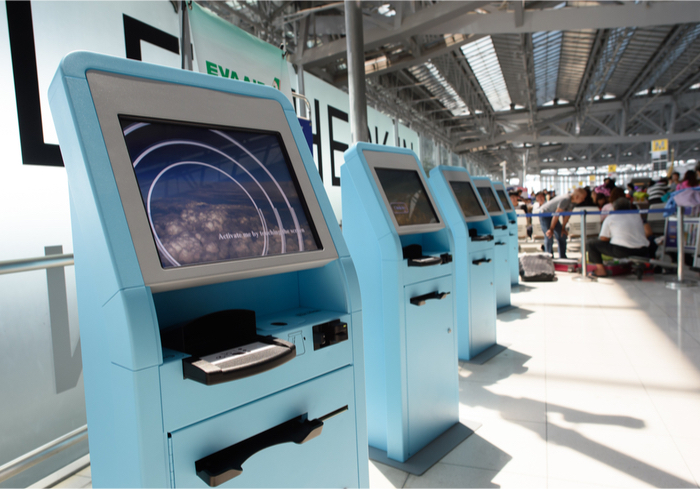Consumers want their orders faster than ever before. Quick-service restaurants (QSRs) are working to make the ordering process faster too.
Wendy’s, for example, planned to roll out self-ordering kiosks at about 1,000 of its retail locations by the end of 2017 in an attempt to both lure younger customers and to battle long lines at peak dining hours. The move could also bolster the company’s bottom line.
“They are looking to improve their automation and their labor costs, and this is a good way to do it,” Darren Tristano, vice president with Technomic, a food service research and consulting firm, said. “They are also trying to enhance the customer experience. Younger customers prefer to use a kiosk.”
Wendy’s is hardly alone. Merchants from QSRs to large eCommerce retailers are turning to technology such as digital kiosks to drive traffic into their stores. If they don’t, they risk losing business to competitors that embrace the technology, according to the PYMNTS Unattended Retail Tracker. Here’s how retailers are adapting to the future of unattended retail and why the industry is poised for growth:
— 60 percent of consumers would visit a QSR more often if it offered self-service kiosks. The finding comes from Tillster, which partnered with SSI to study how offering self-service kiosks impacts guest behavior. After talking with 2,000 restaurant customers across the U.S., the company was able to discern customer ordering habits and preferences. “Restaurants are finally beginning to adopt self-service kiosks, and our research shows it’s an important offering in the customer’s eyes,” Tillster CEO Perse Faily said in a statement. “And for restaurants, kiosks have proven to be optimized to achieve key objectives, such as increasing check size or improving speed of service.” While it’s not surprising that tech-savvy millennials may want to use kiosks, research shows customers of various age groups are seeking to use technology such as self-service kiosks in both QSR and fast-casual establishments.
— $34.1 billion is the projected size of the interactive kiosk market by 2023. Kiosks can be implemented for a variety of products — even eReaders. In 2016, for example, Amazon began running pop-up kiosks for Kindle eBooks in convenience stores around the Seattle area, GeekWire reported. The kiosks contain gift cards for both individual Kindle titles and three- and six-month subscriptions to Amazon’s new Kindle Unlimited program that offers members access to Amazon’s entire digital library with no restrictions for the duration of the subscription.
— $7 billion is the total amount of vending machine sales in the U.S. And vending machines are not limited to sodas in the break room. The Cargo Box — a vending machine inside rideshares — has been optimized for both drivers and consumers to interact with minimal friction. Drivers don’t pay for the machine, nor are they responsible for ordering stock for it (although they are given extra supplies to keep in the trunk for sporadic outages). The firm’s software keeps track of orders and sends supplies on an automated basis. To ease their trouble of driving around with the machine, drivers receive 25 percent of sales, plus bonuses for clearing certain volumes and referring other drivers. Customers can access the Cargo Box and pay for what they want to buy without having to download a special app; instead, they can scan a QR code on the machine itself or go to a web interface to complete the transaction.
Advertisement: Scroll to Continue
— $1 billion is the projected value of the self-serve kiosk industry by 2021. Besides QSRs, this technology is popping up at hotels. YOTEL, for example, uses self-service kiosks to do everything from helping guests check in within minutes using just a QR code to storing their bags using their cute and cuddly Yobot to, soon, getting comfort food from an automat inside the hotel. That use of technology allows YOTEL to invest in the human talent to help guests with the things that are not so easily automated. Jo Berrington, VP of Brand at YOTEL, said the company began with the idea to combine a self-service, airline-style check-in with an efficient hotel room model that provided hotel guests what they needed — a comfortable bed, a great shower, powerful and free Wi-Fi and a convenient location.
— 25 percent is the projected percentage of customer service operations that will use chatbots by 2020. That’s up from just 2 percent in 2017. According to news from Gartner, a leading research and advisory company, more than half of organizations have already invested in virtual customer assistants (VCAs) for customer service so they can utilize all the advantages of automated self-service technology. “As more customers engage on digital channels, VCAs are being implemented for handling customer requests on websites, mobile apps, consumer messaging apps and social networks,” Gene Alvarez, managing vice president at Gartner, at the Gartner Customer Experience Summit in Tokyo, said.
Kiosks have already been installed at several Wendy’s locations in central Ohio, where the company first tested the technology. Order at the counter will still exist for now, but Tristano thinks the counter service of the past is likely about to become extinct as mobile ordering and payment via smartphones will one day overtake self-ordering kiosks and cash registers.

